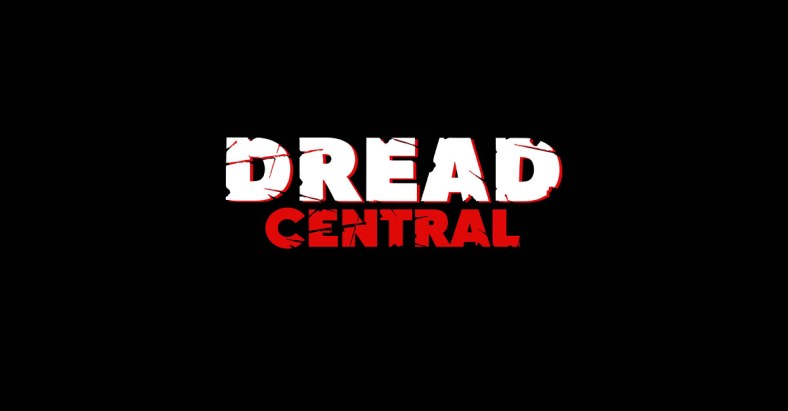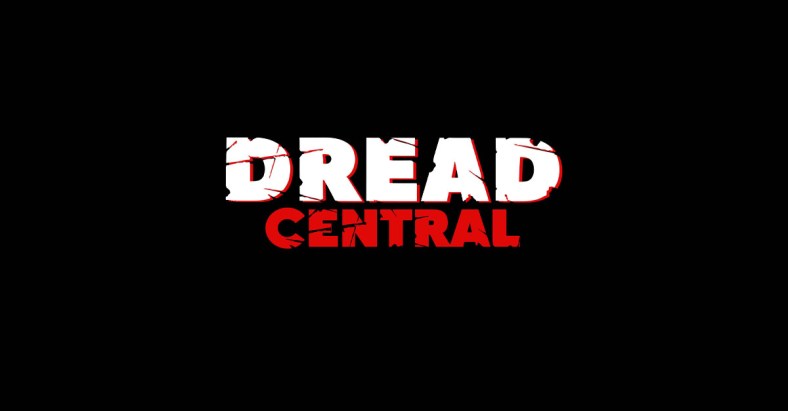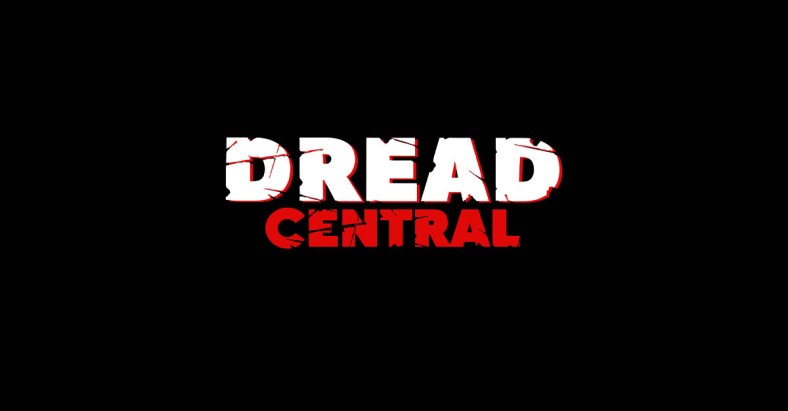Unearthed Exclusive Part 1 of 2: Twenty-Four Years After its Release, Screenwriter David J. Schow Talks The Crow

For many readers of Fangoria in the 1990’s, the magazine’s provocative and insightful column “Raving & Drooling” (appearing from 1992 to 1996) written by American author David J. Schow was cause in and of itself to pick up an issue (and for those who missed it, those forty-one installments were collected into the award-winning 2000 book release Wild Hairs). For devotees of the literary subgenre of “splatterpunk” (a term Schow himself coined in the 1980’s, populated by the likes of fellow writers John Skipp, Clive Barker, Poppy Z. Bright and the late Jack Ketchum), Schow’s also well revered, from his 1988 novel The Kill Rift to his latest, 2012’s Upgunned. And for fans of horror cinema, his name will undoubtedly spark recognition as the subversive screenwriter of 1990’s Leatherface: The Texas Chainsaw Massacre III and director Dave Parker’s 2009 film The Hills Run Red, among others.
Late last year I sat down with Schow to discuss the film he’s most known for however, New Line Cinema’s cult classic The Crow, a feature which, much like the oversized French poster of the same mounted upon the writer’s Hollywood Hills’ living room wall, will forever loom large in his life.
Based on James O’Barr’s 1989 comic of the same name, which tells the story of slain musician Eric Draven who returns from the grave (accompanied by a crow as his guide) to avenge the rape and murder of his fiancée on the eve of their impending nuptials, the stylized dark fantasy film opened on May 11, 1994, and was a sleeper hit at the box office, garnering critical praise, grossing more than twice its budget and arguably providing the then burgeoning goth movement a celluloid altar at which to collectively worship. A series of flagging sequels soon followed, as did an ill-conceived television series, and in October of next year an impending reboot titled The Crow Reborn, starring Jason Momoa, in which vocal fans of the original seem at present less than interested. Perhaps unsurprising really, for the tragic death of lead Brandon Lee, son of martial arts and screen legend Bruce Lee, on March 31, 1993, during the indigenous production has rendered the film a veritable cinematic headstone.
 “I got into New Line Cinema because of Mike De Luca, who got his first screen credit as a producer on Leatherface: The Texas Chainsaw Massacre III and who was working there at the time in development, was a fan of my printed fiction,” Schow offered of his work with the studio, as well as the eventual script for The Crow, which he was hired to re-write following screenwriter John Shirley’s initial four drafts of the same.
“I got into New Line Cinema because of Mike De Luca, who got his first screen credit as a producer on Leatherface: The Texas Chainsaw Massacre III and who was working there at the time in development, was a fan of my printed fiction,” Schow offered of his work with the studio, as well as the eventual script for The Crow, which he was hired to re-write following screenwriter John Shirley’s initial four drafts of the same.
“Caldecot Chubb, a producer who was later to work with Ed Pressman on The Crow, had called me into his office to work with Penelope Spheeris on a film called Deadly Metal, which was basically about a metal band that ate its groupies,” Schow continued of his circuitous journey to attachment. “And I had this great meeting with Penelope, and we were firing on all cylinders, and Deadly Metal went, which is where most film projects go, nowhere fast. But, in the interim, Cotty became one of the guys that I showed to every spec project or set of notes that I’d worked on subsequent to Leatherface, and one of these was sort of a time travel horror script called Dead Reckoning, and when The Crow came around and Pressman asked Cotty if they had any ideas who could re-write Shirley’s script, Cotty called me.”
“So in 1991 we sat down with an idea to address and develop (The Crow),” said Schow, “and thanks to Cotty’s recommendation, we were very quickly taking meetings at Pressman, where I met (The Crow director Alex) Proyas and Brandon (Lee) and everyone involved in the prep, and we probably spent about a year and a half rewriting the script.”
Based on O’Barr’s at the time incomplete comic series, itself partially inspired by the real-life death of the comic book writer’s fiancée at the hands of a drunk driver in 1978, Schow said of adapting for the screen the rather violent source material, “The comic is about a guy that comes back from the dead, shoots a lot of heroin, plays a guitar, kills some guys, shoots some more heroin, and kills some more guys. Shirley’s script was very beholden to the comic book, sometimes to its detriment, because John had written the version with the talking bird in it, which was probably not a good idea. I think that concept works better in the comic than it would have on the screen.”
“Frequently with these projects it’s not the quality of the script that gets another writer assigned to it, it’s the fact that the people in the production food chain want to pull rank and flush, rinse, and repeat,” he mused. “So it’s not a bad mark against the quality of the original script at all, but you go into a job like this—and I’ve been rewritten too—so I’ve seen it from both ends, knowing that they’re going to want ‘different’ and you’re going to have to think on your feet and come up with something that they appreciate, or at least comprehend.”
Expounding on the challenges of adapting the comic to screen, “We were functioning on a set of three issues out of five, with the remaining two issues as a set of incomplete pencils, and we couldn’t really get a definitive answer on how it wrapped up, so we had to make up whatever the conclusion of this ‘arc’ – to use one of those dreaded Hollywood words – would be,” said Schow. “If you have a story for example, with a great deal of killings in it, or a novel with a mass murder and then another mass murder and then another, when you translate that to a film, there is no build. How do you make a subsequent incident worthy of paying attention to, or in the cheapest terms possible, how do you make this ‘whammy’ bigger than the one that came before it in order to keep everyone’s attention until everything finally blows up with a big explosion at the end so that everyone knows that the movie’s over?”
“So, that’s the simplistic version of it.”

“Having then also spent the entirety of 1992 working on the script, one of the things that we stumbled over or deduced or figured out over the long course of many, many drafts where we tried a whole bunch of different things—and this includes trial and error and trying things and failing—is that this film had a brain of sorts, and it had plenty of guts, but it required heart in the middle of it somewhere,” offered Schow.
“There’s certainly one in the middle of O’Barr’s comic, which was based on his own personal tragedy, and we had to come up with an equivalent for that, and it literally happened in Brandon’s (hotel) suite. This is a flash forward all the way to pre-production of the film in January of 1993, when we were in Wilmington, North Carolina. Some of production was staying at a place called the Greystone Inn, which was an elaborated hotel, a bed and breakfast sort of place, with amenities, and in Brandon’s suite—he had a third or a half of an entire floor there—he and I found a door that opened in to this little storage area. And we looked at each other, and said at about the same time—and this sounds like the kind of story you’d make up for a script—‘That’s what The Crow needs. It needs a secret room.’ And the secret room became the attic that you see in the film’s flashbacks (with Eric and his fiancée Shelly), so it was that late in the process (where we found the film’s heart).”
As for what had been discarded during the trial and error process in his previous drafts, “We specifically had an Asian villain, that Brandon and (stunt coordinator) Jeff Imada thought was a bad idea,” Schow elaborated. “The size of the gang (also) changed, and it literally resulted in a stack of scripts that’s over a foot high, and I couldn’t tell you how many versions there are. If I went downstairs to the office and hauled them out of the foot locker and counted them that wouldn’t even be accurate, because there were a lot of intermediates, and then when we were shooting, a very strange thing happened, which was that for all of the writing we had done on this project, there was no script that reflected what we were shooting in its totality. So one of my jobs of many in Wilmington, was to take the notes of the things we had changed or scripted perhaps the previous day, and render those into a form that could be included into some kind of big collated script, or at least something that resembled a shooting script.”
As a result of this,” he continued, “today I have a version of the script that we could send to people that basically reflects the movie as shot, but that script didn’t exist while we were shooting the movie, because we pieced it together a scene at a time, from scenes we changed, from scenes according to the shooting schedule, that we would alter the day before, because another one of my jobs during the shooting—and this was the beginning of February through the end of March, and then June and part of July of ’93—was at two thirty in the morning during lunch, because we were constantly shooting at night, were my ten minutes with Alex (Proyas) in his trailer, and we’d dope out what I’d write for the next twenty four hours. Then Peter Pound, the storyboard guy, would come in, and get his five minutes with Alex, and he would thrash out what he was going to storyboard for the next day. So it was really run and gun, because we had to accommodate changes—constantly and unendingly. Some of the changes were due to budget, schedule, to the availability of other actors, so it was really me and the storyboard guy taking some heat off of Proyas by helping him change things at the last minute, and by honing the film by making better individual scenes and individual lines of dialogue that we had spent over a year on already.”
Pertaining to Lee’s influence on the narrative, “Brandon had the ability to go to Alex, and say, ‘This scene should be longer. We should explore this more,’” continued the screenwriter. “And he had several opportunities to write his own dialogue which he mostly did around stunt scenes. It was very collaborative. But Brandon did have the power to specifically object to something he didn’t like, like having an Asian bad guy, for example, and we paid attention. Because other times, day to day, it was like dealing with the character instead of the actor, because you were getting Eric Draven’s viewpoint on the script as opposed to Brandon’s.”
As for Lee’s well documented commitment to immersing himself in the character of Draven, “People think this is a made up story, but Brandon literally got into a bathtub of ice at the Greystone Inn to lower his body temperature, so he could better prepare for being a dead guy,” said Schow (no small feat given that during principle photography the actor was more often than not filmed outdoors in frigid winter conditions – and under rain machines to boot).
“So he took it very seriously,” continued Schow, “and I remember Brandon in Alex’s office one day on set, where he just kind of hit the wall with his back and sank down on his haunches and just kind of hung his head. It was really just too much for him, because he was living in that skin 24/7, and it was beginning to get to him sometimes, because we had a pretty brutal shooting schedule on top of that. It affected everyone to a greater or lesser degree, but what it also did was bond the crew into a really good unit. It sounds dreary and depressing, and it did get bad at times, but there were wonderful things that would happen on the production every day.. .”
Schow paused.
“But you really can’t talk about an upside to a production where your star gets killed—that’s the ultimate tragedy that can happen on a film set.”
Part 2 coming soon.
Note: This interview is an excerpt from the forthcoming book Unearthed: A Look Behind the Terror, currently being written by Sean James Decker. For more, follow Decker on Twitter and Instagram @seanjdecker.

Categorized:News

